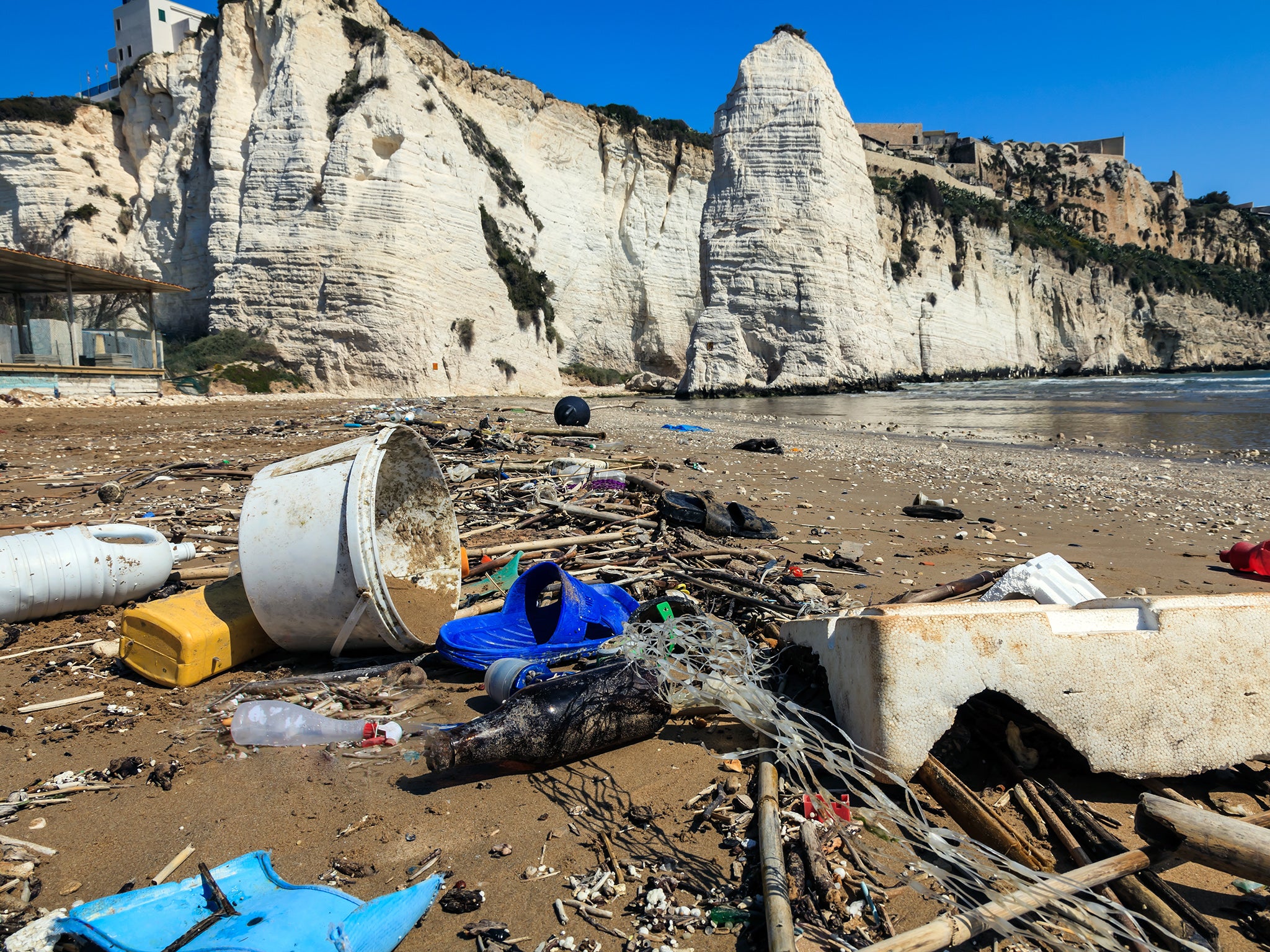Microplastics are most common waste found along Mediterranean coast, study says
Polyethylene used to make plastic shopping bags and cling film forms most of plastic found in coastal waters, according to marine scientists from University of Barcelona

Microplastics from shopping bags and clingfilm are the most common type of waste found in Mediterranean coastal waters, research shows.
Polyethylene makes up over half the plastic (54.5 per cent) found along the Mediterranean coast of Spain, according to a study by the Research Group on Marine Geosciences at the University of Barcelona.
This type of plastic is most commonly used to make plastic shopping bags and clingfilm.
Polypropylene (16.5 per cent) – used in rigid plastic packaging such as bottles – was the second-most common plastic found, followed by polyester (9.7 per cent) which is used in clothing, furnishings and textiles.
More than 60 per cent of the waste swirling through Mediterranean coastal waters is plastic, the study found.
Some areas around the coastal peninsular had maximum concentrations of up to 500,000 microplastics per square kilometre.
One of the study's authors, Dr William de Haan, a marine scientist at the University of Barcelona, said: “These results coincide with studies conducted in other regions of the Mediterranean, a marine ecosystem regarded as one of the biggest scuppers of floating microplastic worldwide.”
The study focused on the coasts of Catalonia, Murcia and Almeria in Spain.
The most extreme levels of microplastics were found around Tordera and Besos – areas with high levels of pollution due to the high density of population, tourism, use of beaches and marine activities.
Polyethylene made up two-thirds (65 per cent) of the ocean microplastics found in these areas of the coast.
Co author Professor Anna Sanchez-Vidal said: “Size and physical and chemical properties, as well as the conditions of the marine environment, determine the destination of microplastics in water.
“Density of the plastic material is a determining factor regarding big fragments. When talking of a microplastic, dynamics are more complex.
“Also, density of marine water varies due several factors – temperature, salinity, geographical position, depth – and it affects directly the buoyancy of the microplastics.”
She added: “Around 66% of the microplastics we found in marine aggregates – polyethylene, polypropylene and expanded polystyrene – are low density microplastics in the sea.

“This hypothesis could explain the presence of low-density microplastics in big marine depths worldwide, and why the abundance of plastics floating in the surface of the ocean is lower than expected.”
The study was published in the journal Marine Pollution Bulletin.
SWNS
Join our commenting forum
Join thought-provoking conversations, follow other Independent readers and see their replies
Comments
Bookmark popover
Removed from bookmarks